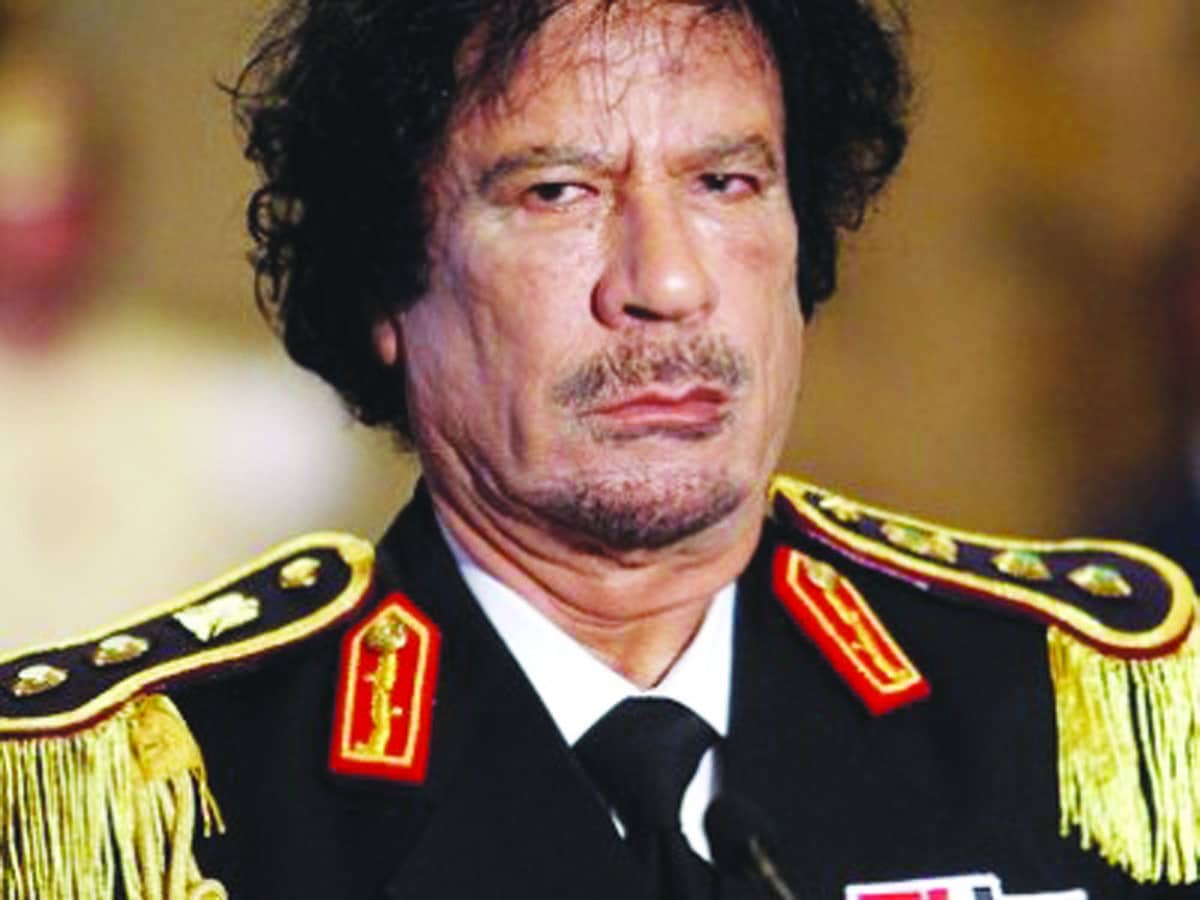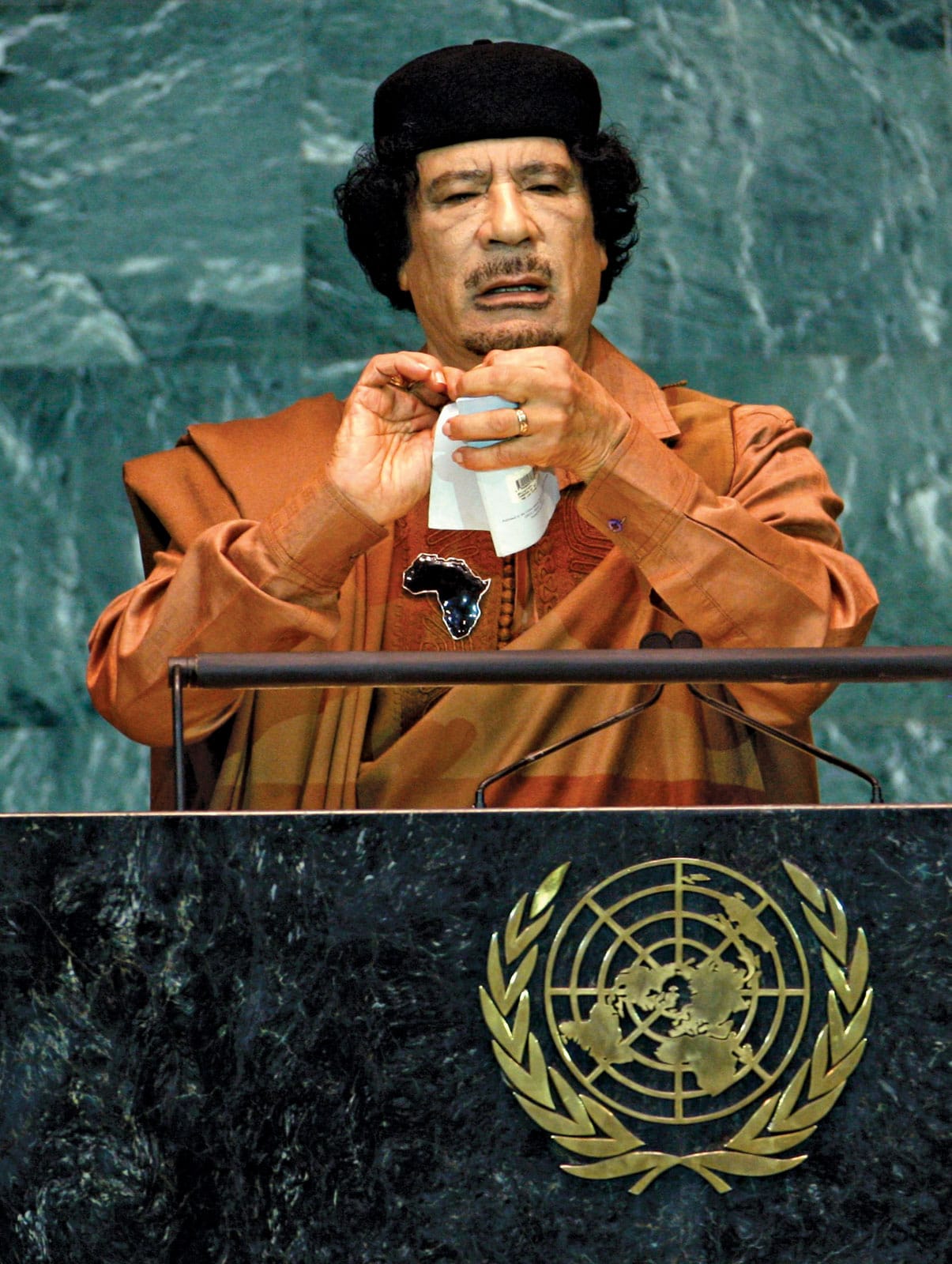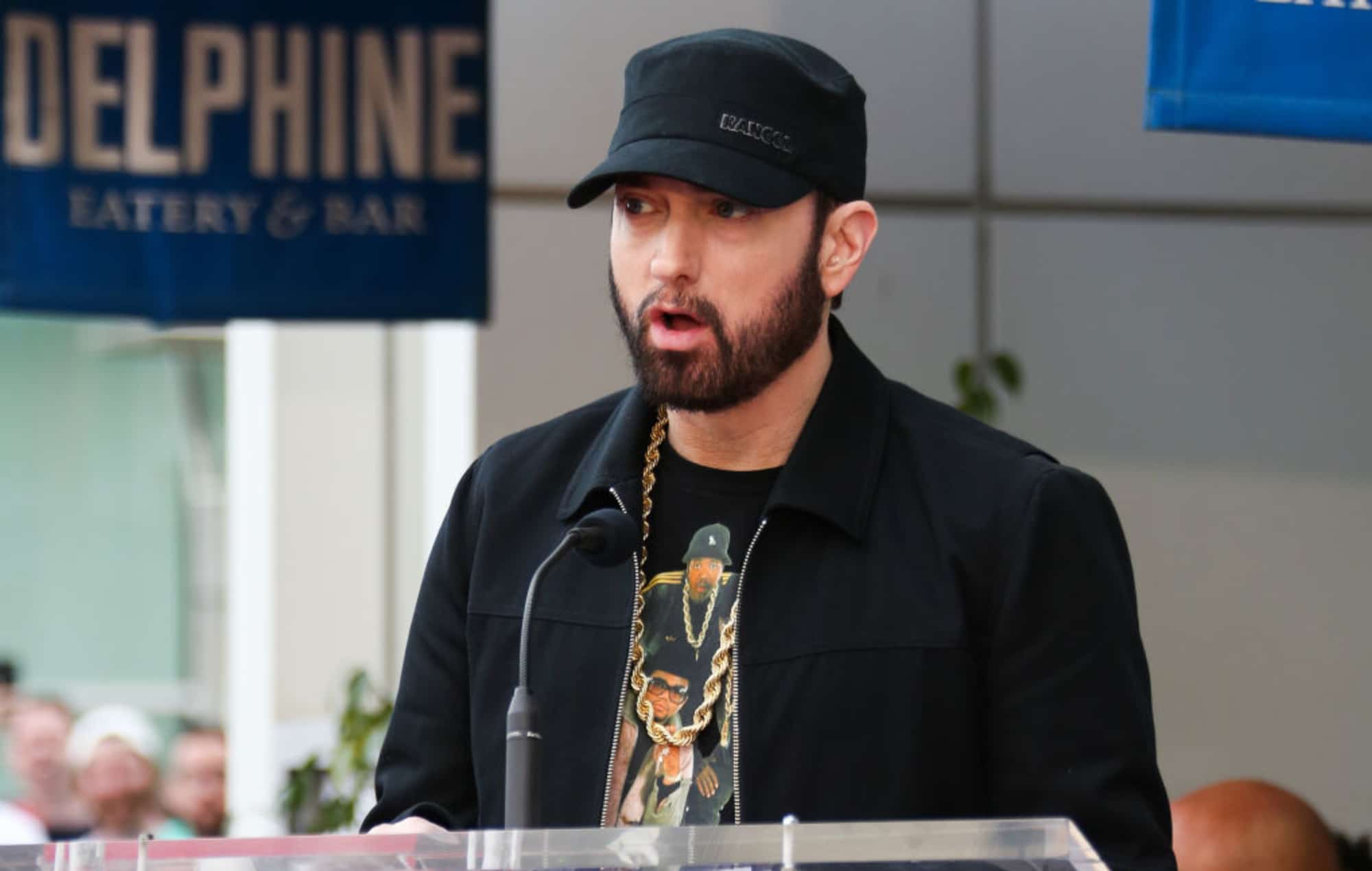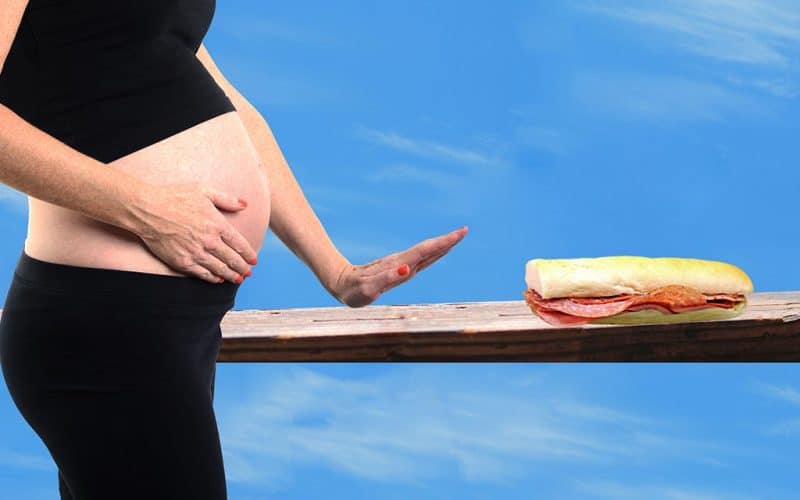Muammar al-Qaddafi gained control of the Libyan government in 1969 and ruled as a dictator for over 40 years before being killed and overthrown in 2011.
He was born in a Bedouin tent in Sirte, Libya, in 1942. He joined the military and organized and staged a coup to seize Libya’s control in 1969, removing King Idris.
However, his Arab nationalist belief and socialist-related policies gained him citizens’ support at the beginning of his rule.
At the same time, his corruption, despotic military interference in other countries in Africa, and record human rights abuses turned many Libyans against him.
He was born on June 7, 1942, in Sirte, Libya where he was raised in a Bedouin tent in the Libyan desert, he was from a tribal family called the al-Qadhafah.
When he was born, Libya was an Italian colony, But in 1951, Libya gained independence. As a young man, Qaddafi was motivated by the Arab nationalist movement and was inspired by Egyptian leader Gamal Abdel Nasser.
In 1961 Qaddafi enrolled in the military college in the city of Benghazi. He also spent four months in the United Kingdom receiving military training.
After graduating, Qaddafi progressed through the ranks of the military. As frustration with Idris grew, Qaddafi became associated with young officers’ movement to overthrow the king. As a young, charismatic man, Qaddafi became a leader in the group.
Qaddafi named himself commander in chief of the armed forces and chairman of the Revolutionary Command Council after overthrowing King Idris; At age 27, he became the ruler of Libya.
Gaddafi regarded his appearance as notable. Gaddafi had a large wardrobe, and sometimes changed his outfit multiple times a day. He favored either a military uniform or a traditional Libyan dress.
He viewed himself as a fashion icon.,Gaddafi moved into the Bab al-Azizia barracks, and a 6-square-kilometer (2.3 sq mi) fortified compound located two miles from the center of Tripoli when he ascended into power, his home and office at Azizia was a bunker designed by West German engineers.
At the same time, the rest of his family lived in a large two-story building. Within the compound were two tennis courts, a football pitch, several gardens, camels, and a Bedouin tent in which he entertained guests.
In the 1980s, his lifestyle was viewed as modest, especially compared to those of many other Arab leaders. He was deliberate about his security, regularly changing where he slept and sometimes grounding all other planes in Libya when he was flying.
He made particular requests when traveling outside Libya. During his trips to New York City, Rome, Madrid, Moscow, and Paris, he resides in a bulletproof tent, following his Bedouin origins.
Gaddafi was believed to be a womanizer, and in the 1970s and 1980s, there were reports of him making sexual advances toward female reporters and members of his entourage.
Starting in the 1980s, he traveled with his all-female bodyguards, who were allegedly sworn to a life of celibacy.
After Gaddafi’s death, the Libyan psychologist Seham Sergewa, part of a team investigating sexual offenses during the civil war, stated that five guards told her Gaddafi and senior officials sexually abused them.
After Gaddafi’s death, the French journalist Annick Cojean wrote a book claiming that Gaddafi had had sexual relations with women and even teenagers, who had been specially selected for him.
One of those interviewed was a woman named Soraya, alleged that Gaddafi imprisoned her in a basement for six years, where he repeatedly abused her, urinated on her, and forced her to drink alcohol, watch pornography and snort cocaine.
Gaddafi was married to Fatiha al-Nuri, in 1969. She was the daughter of a prominent figure in King Idris’ administration, General Khalid, and she was from a middle-class background.
Although they had one son, Muhammad Gaddafi, who was born in 1970, their marriage ended in 1970. He then married Safia Farkash. They met in 1969 when he was hospitalized with appendicitis; he said that it was love at first sight.
The couple was married until his death, and they had seven kids: Saif al-Islam Gaddafi (Son, born in 1972), Al-Saadi Gaddafi ( son born in 1973), Mutassim Gaddafi ( born in 1974 and killed during the civil war in 2011), Hannibal Muammar Gaddafi ( son, born 1975), Ayesha Gaddafi ( son, born in 1976), Saif al-Arab Gaddafi ( Son, born in 1982 and was killed during the civil war in 2011), and Khamis Gaddafi (1983–2011). He also adopted two children, Milad Gaddafi and Hana Gaddafi.
Taking Control of Libya
The first thing Qaddafi did was to shut down the sh and American military bases in Libya. He also asked that foreign oil companies in Libya share a more substantial portion of revenue with the country.
Qaddafi abolished the Gregorian calendar with the Islamic one and prohibited the sales of alcohol. Qaddafi’s ruling style was not just oppressive, and it was eccentric.
He had a rank of female bodyguards in heels, and saw himself as the king of Africa; he erected a tent to stay in when he traveled abroad and dressed in outlandish costume-like outfits.
In the dreamy days of 1969 – when he disposed of pf King Idris in a bloodless military coup – Muammar Gaddafi was a good looking charismatic young army officer full of idealism.
As a disciple of President Gamal Abdel Nasser of Egypt, Gaddafi first started by resolving the unfair economic legacy of foreign domination, while for Nasser, it was the Suez Canal. For Gaddafi, it was oil.
Substantial oil reserves were discovered in Libya in the late 1950s. Foreign petroleum companies in control of the extraction set prices to the advantage of their domestic consumers and enjoyed half the shares of the revenue.
Gaddafi demanded renegotiation of the contracts and threatened to close down production if the oil companies refused. The companies agreed, and Libya became the first developing country to secure a majority share of its oil production revenues.
Libya was in a stable position to enjoy the benefits as the production levels matched the Gulf states, with one of the smallest populations in Africa (less than 3m at the time), the oil made the country rich.
Rather than continuing with the doctrines of Arab Nationalism, or following the shining excesses of capitalism, Gaddafi’s mercurial character led him and Libya on a different path.
He had redistributed wealth by largely enriching his family members and himself from oil revenues, and redistribution of wealth to the citizens was carried out more in the spirit of buying loyalty than promoting equality.
Since assuming power, Gaddafi lent support several times to different terrorist groups and regimes, including Uganda, Iran, Iraq, Syria, the Palestine Liberation Organization and its sub-groups, the black panther, and the Irish Republican Army.
Heavily backed by the Soviet Union, he fought against Egypt and Chad and its ally France for control of the northern region of Chad.
In a bid to drive French forces out of the country, Gadaffi sent a military force into Chad, only to be annihilated by the minimally trained and armed but highly motivated Chadian army.
The survivors ran back to Libya, leaving behind a varied assortment of vehicles, equipment, and weapons.
Gaddafi spurred several incidents with the US, one of which led to a retaliatory bombing raid on his headquarters in Tripoli by the US that left Gaddafi’s infant daughter dead while he escaped with only minor injuries.
In 1988 Libyan intelligence agents bombed a Pan Am Flight 103 over Lockerbie, Scotland, leading to the death of 200 people. In 2011, as part of the “Arab Spring,” major civil unrest broke out in Libya, whose goal was to remove Gaddafi from power.
Gaddafi began a violent campaign against his own people in a bid to shut it down, and this led to a civil war, with Gaddafi forces on one side and a combination of army defectors,students, and ordinary people and with air and logistical support from NATO, on the other.
As the rebellion grew and the enormity of the threat to his rule became evident, Gaddafi demonstrated that he had lost none of the ruthlessness directed against rebels and exiles in the 1970s and 1980s.
This time it was turned on to whole towns and cities where Libyans had dared to tear down his posters and call for an end to his despotic rule.
Regular troops and mercenaries nearly overwhelmed the rebels, consisting of military deserters and untrained ordinary citizens brought together under the umbrella of the National Transitional Council (NTC).
Some of Benghazi’s first footage of rebellion showed angry Libyans youths outside an official building smashing up a green monolith that represented the spurious liberation policy that had kept them enslaved since the 1970s – the Green Book.
After a civil war that lasted for over eight months, Gaddafi was captured by rebels in his hometown of Sirte where, Qaddafi and his family had been believed to be hiding, and soon afterward he was executed
There are claims that he met his grisly end when NTC forces found him sheltering in a tunnel following a Nato airstrike on his convoy as he tried to take a break from his last stronghold, the city of Sirte.
Although the true circumstances of his death still remain in dispute as there are different accounts, some persons said he was killed in the crossfire, summarily executed, or lynched and dragged through the streets by jubilant, battle-hardened fighters.
Although this meant the Libyan people were robbed of proper justice, the news sparked spurious celebrations across his former domain that over 42 years of rule and misrule had truly come to a close.
References;
Muammar al-Qaddaf: Wikipedia, The Guardian, NY Times










